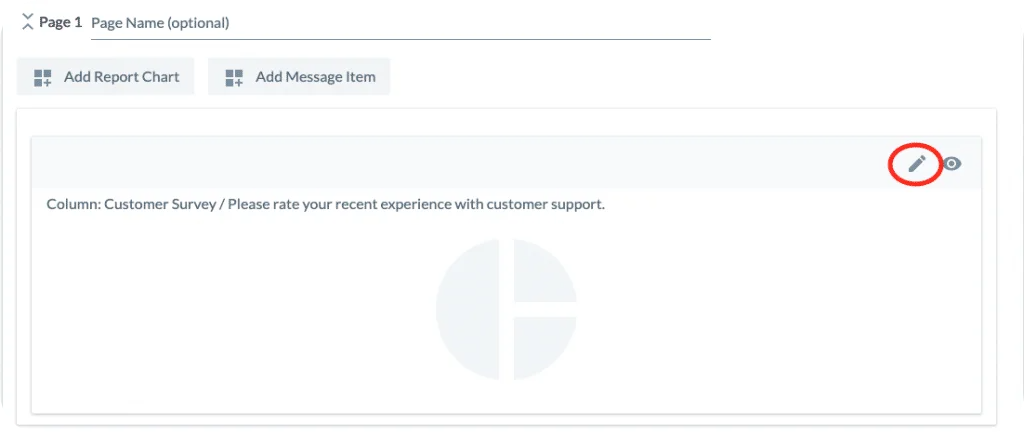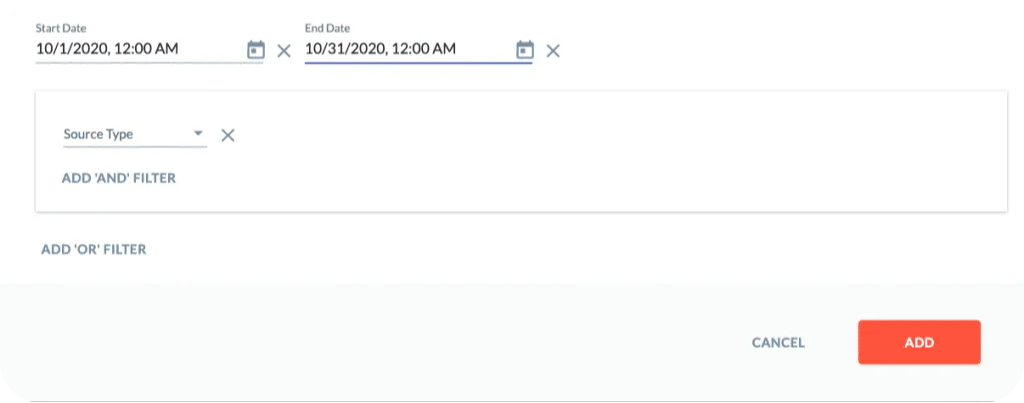Hello.
How can we help you?
How to Filter your Dashboards and Reports
What is filtering?
Applying a filter to your Report or Dashboard allows you to view a subset of your data. For instance, you may want to view results from a specific time period or from respondents in a certain location.
Filters can be applied to an entire Report or Dashboard, in which case all charts/graphs will be filtered, or they can be applied to an individual chart or graph. There are two types of filters – static filters and live filters.
- Static filters are applied to a Report or Dashboard and saved – they will remain there until deleted.
- Live filters are meant to be more interactive so you can change them to look at different cuts of data at any time. Live filters are not saved – they are reset whenever you refresh or re-run the report. Printed or exported reports/dashboards will also not include live filters – you should use static filters for printing or exporting.
How to Apply a Static Filter to an Entire Report or Dashboard
1. Edit the Report or Dashboard
Edit your Report or Dashboard and click the "Add Report Filter" or "Add Dashboard Filter" button respectively.

2. Configure Options
Select the Filter and Source options as appropriate:
- Question: Filter your results based on the answer to a particular survey question. For instance, you might want to run a report for all respondents who answered that they were male or of a certain age range in a demographic survey.
* Note that if your Dashboard includes charts for multiple surveys, setting a filter based on the answer to a question will only apply to the survey that contains that question. - Contact Attribute: Filter your results based on information that’s stored in your respondent’s contact profile, such as their age, geographic location, or department.
* Note that your survey respondents must exist as Contacts in Checkbox for this filter option to work. - Response Property: Filter your results based on something about your survey responses, such as the language the survey was taken in.
- Date Range: Filter your results based on date of the response.
* Note that the date range is based on the completion date of the survey and therefore does not apply to incomplete responses.

3. Add Additional Filters
Add any additional filters that you'd like to apply.
Note that when you add multiple filters to a Report or Dashboard you have an option to add “AND” filters or “OR” filters.
- “AND” filters will display results where both/all filters are true.
- “OR” filters will display results where any of the filters is true.
4. View your Filtered Report/Dashboard
Click on the View tab of your Report or Dashboard to see your filtered results.

Apply a Static Filter to a Chart
1. Edit your Report or Dashboard
Edit your Report or Dashboard and then edit the chart you want to apply the filter to:

2. Add Filter
Click "Add Filter" and choose the appropriate source and options:
- Question: Filter your results based on the answer to a particular survey question. For instance, you might want to run a report for all respondents who answered that they were male or of a certain age range in a demographic survey.
- Contact Attribute: Filter your results based on information that’s stored in your respondent’s contact profile, such as their age, geographic location, or department.
* Note that your survey respondents must exist as Contacts in Checkbox for this filter option to work. - Response Property: Filter your results based on something about your survey responses, such as the language the survey was taken in.
- Date Range: Filter your results based on date of the response.
* Note that the date range is based on the completion date of the survey and therefore does not apply to incomplete responses.

3. Add Any Additional Filters
Add any additional filters that you'd like to apply to your chart.
Note that when you add multiple filters to a chart you have an option to add “AND” filters or “OR” filters.
- “AND” filters will display results where both/all filters are true.
- “OR” filters will display results where any of the filters is true.
4. View your Filtered your Report/Dashboard
Click on the View tab of your Report or Dashboard to see your filtered results.

Apply a Live Filter to a Chart
1. Pull Reporting Sharing URL
Go to the View tab or open the Share Link of your Report or Dashboard

2. Edit the Filter
Click the filter icon and then click EDIT.

3. Configure the Filter
Choose your Filter source and options:
- Question: Filter your results based on the answer to a particular survey question. For instance, you might want to run a report for all respondents who answered that they were male or of a certain age range in a demographic survey.
* Note that if your Dashboard includes charts for multiple surveys, setting a filter based on the answer to a question will only apply to the survey that contains that question. - Contact Attribute: Filter your results based on information that’s stored in your respondent’s contact profile, such as their age, geographic location, or department.
* Note that your survey respondents must exist as Contacts in Checkbox for this filter option to work. - Response Property: Filter your results based on something about your survey responses, such as the language the survey was taken in.
- Date Range: Filter your results based on date of the response.
* Note that the date range is based on the completion date of the survey so it will not apply to incomplete responses.

4. View Filtered Results
*Note that Live Filters will be removed each time you re-run or refresh the report or when you print or export the report. They are meant to be interactive so you can view different segments of your data “on the fly”.

